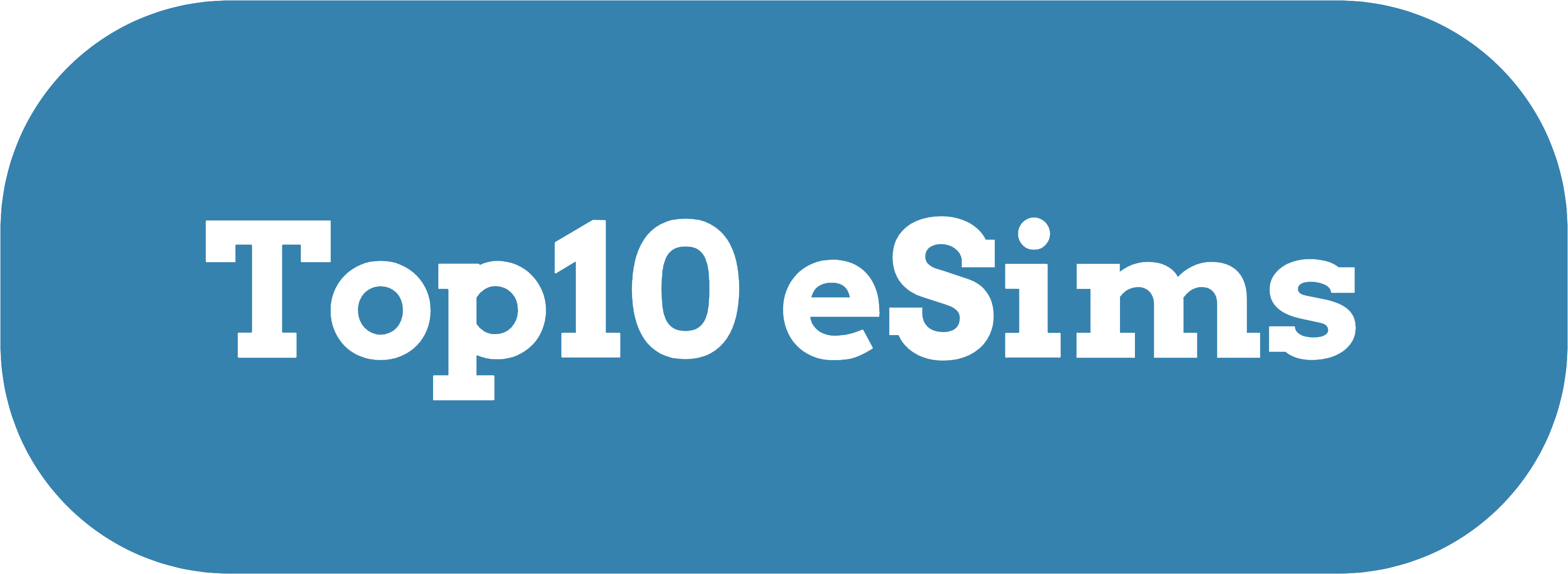In an era where staying connected is non-negotiable, eSIM technology has emerged as a game-changer for travelers, remote workers, and tech enthusiasts alike. Gone are the days of fumbling with physical SIM cards at airport kiosks or paying exorbitant roaming fees. With eSIMs, users can download a digital carrier profile in seconds, instantly accessing local data plans wherever they go.
But as the eSIM market explodes with providers claiming to offer the “best coverage” or “lowest prices,” how do you separate fact from marketing fluff? Real customer reviews hold the answer. This article synthesizes hundreds of user experiences to spotlight how top eSIM providers perform in the wild—beyond their polished websites and sales pitches.
Why Authentic Customer Feedback Matters
Before diving into provider-specific insights, it’s worth unpacking why customer reviews are indispensable when choosing an eSIM service. While providers tout features like “global coverage” or “5G speeds,” real-world performance often hinges on factors they don’t advertise:
-
Network reliability in remote areas: Does the eSIM hold up in rural towns or mountainous regions?
-
Fair usage policies: Is “unlimited data” truly unlimited, or are speeds throttled after a certain threshold?
-
Customer support responsiveness: Can you reach a human agent at 3 AM when your connection drops?
By aggregating feedback from platforms like Trustpilot, Reddit, and app store reviews, we’ve identified patterns that reveal which providers deliver on their promises—and which fall short.
How We Analyzed the Data
To ensure objectivity, we focused on four key criteria repeated across user reviews:
-
Coverage Accuracy: Does the provider’s stated coverage map match real-world connectivity in popular destinations?
-
Pricing Transparency: Are there hidden fees or sudden price hikes for top-ups?
-
Ease of Use: How intuitive is the app interface? Are activations seamless?
-
Support Quality: Do providers resolve issues promptly, or leave users stranded?
We also prioritized recent reviews (within the last 6 months) to account for rapid improvements—or declines—in service quality.
Top 10 eSIM Providers Through the Lens of Real Users
1. Airalo: The Global Pioneer
Overview: Airalo is often hailed as the “Netflix of eSIMs” for its vast library of regional and global plans. Operating in 190+ countries, it’s a favorite among frequent travelers.
What Users Love:
-
Intuitive App Design: Customers praise the clean interface for browsing plans, activating eSIMs, and tracking data usage. One user noted, “I downloaded a Europe plan during my layover in Frankfurt, and it worked before I even left the airport.”
-
Regional Flexibility: Multi-country packages like Discover Europe (3GB for $9) are budget-friendly for cross-border trips.
Pain Points:
-
Speed Throttling: Heavy data users report sluggish performance during peak hours, especially in crowded tourist hubs like Barcelona or Bangkok.
-
No Unlimited Options: Travelers who stream or video-call frequently find Airalo’s capped data plans restrictive.
Verdict: Ideal for short-term travelers who prioritize ease of use over high-speed streaming.
2. Holafly: Unlimited Data, But at What Cost?
Overview: Holafly markets itself as the go-to for “unlimited data” in 160+ countries, targeting digital nomads and remote workers.
What Users Love:
-
Truly Unlimited Plans: A Bali-based freelancer shared, “I uploaded 50GB of client videos in a week with no slowdowns—it saved my project.”
-
No Contract Hassles: Users appreciate the flexibility to buy 5-, 10-, or 30-day plans without long-term commitments.
Pain Points:
-
Hotspot Restrictions: Many reviewers were frustrated that Holafly blocks tethering, calling it a “dealbreaker for working on a laptop.”
-
Inconsistent African Coverage: Travelers in countries like Rwanda or Tanzania reported spotty connectivity despite Holafly’s claims.
Verdict: A strong choice for data-heavy users in North America, Europe, or Asia—but verify coverage for off-the-beaten-path destinations.
3. Nomad: Budget-Friendly, But Limited Reach
Overview: Nomad focuses on affordability, offering regional plans (e.g., Asia, North America) starting at $15 for 5GB.
What Users Love:
-
Transparent Refunds: Nomad’s 30-day money-back guarantee is frequently cited as a trust-builder. One user wrote, “My Japan plan didn’t work, and they refunded me within hours—no questions asked.”
-
Easy Top-Ups: The app lets users add data mid-trip without resetting their plan.
Pain Points:
-
Rural Coverage Gaps: A backpacker in the Scottish Highlands lamented, “I lost signal for two days—Nomad’s UK plan only works in cities.”
-
Slow Customer Service: Users report waiting 24–48 hours for email responses during crises.
Verdict: Great for urban explorers on a tight budget, but risky for remote adventures.
4. Truphone: Premium Support for Business Travelers
Overview: Truphone caters to professionals with high-speed data in 80+ countries and dedicated customer service.
What Users Love:
-
Priority Support: A CEO shared, *“My eSIM failed in Berlin, and Truphone’s 24/7 team fixed it while I was in a taxi to my meeting.”*
-
No Hidden Fees: Users applaud the lack of surprise charges, common with cheaper providers.
Pain Points:
-
Steep Pricing: At $30 for 3GB in the U.S., Truphone is 2–3x costlier than rivals.
-
Sparse Asian Coverage: Business travelers in Southeast Asia often need backup plans.
Verdict: Worth the splurge for executives who can’t afford connectivity hiccups.
5. GigSky: The In-Flight Lifeline
Overview: Partnering with airlines like Delta, GigSky specializes in inflight connectivity and last-minute global plans.
What Users Love:
-
Instant Activation: A traveler shared, *“I bought a plan mid-flight over the Atlantic and was online in 30 seconds.”*
-
Wide Device Support: GigSky works seamlessly with niche gadgets like tablets and IoT devices.
Pain Points:
-
Costly Long-Term Use: A 5GB global plan costs $50—reasonable for emergencies but unsustainable for month-long trips.
-
Inconsistent Speeds: Users in congested cities like New York report erratic performance.
Verdict: Perfect for emergency connectivity, but pair it with a cheaper regional plan for longer stays.
Key Takeaways from Customer Reviews
-
No One-Size-Fits-All Solution: Airalo excels in Europe but struggles in Japan; Holafly’s unlimited data is useless if you need hotspot tethering. Match your destination, data needs, and device type to the right provider.
-
Beware of “Unlimited” Myths: Many providers throttle speeds or block certain activities (e.g., streaming). Always check fair usage policies.
-
Test Before You Travel: Buy a short-term plan to gauge coverage and speed in your destination. Most providers offer 1–3 day options.
The Future of eSIMs: What Users Want Next
Based on recurring feedback, customers are demanding:
-
Better Rural Coverage: Adventurers want providers to partner with local carriers in remote regions.
-
Hybrid Plans: Combining unlimited social media data with capped high-speed streaming.
-
Eco-Friendly Options: Reward users for recycling digital profiles or reducing e-waste.
Final Recommendation
For frequent travelers: Prioritize Airalo or Truphone for their balance of coverage and support.
For digital nomads: Holafly’s unlimited data (where available) is king, but keep a Nomad plan as backup.
For budget-conscious users: Surfroam’s pay-as-you-go model or Nomad’s regional packages offer the most value.
By grounding this analysis in real user experiences, we hope to empower you to choose an eSIM provider that aligns with your travel style—not just slick marketing claims. For the latest deals and in-depth comparisons, bookmark https://top10esims.com/ as your trusted eSIM resource.
Safe travels, and may your connection ever be strong!


